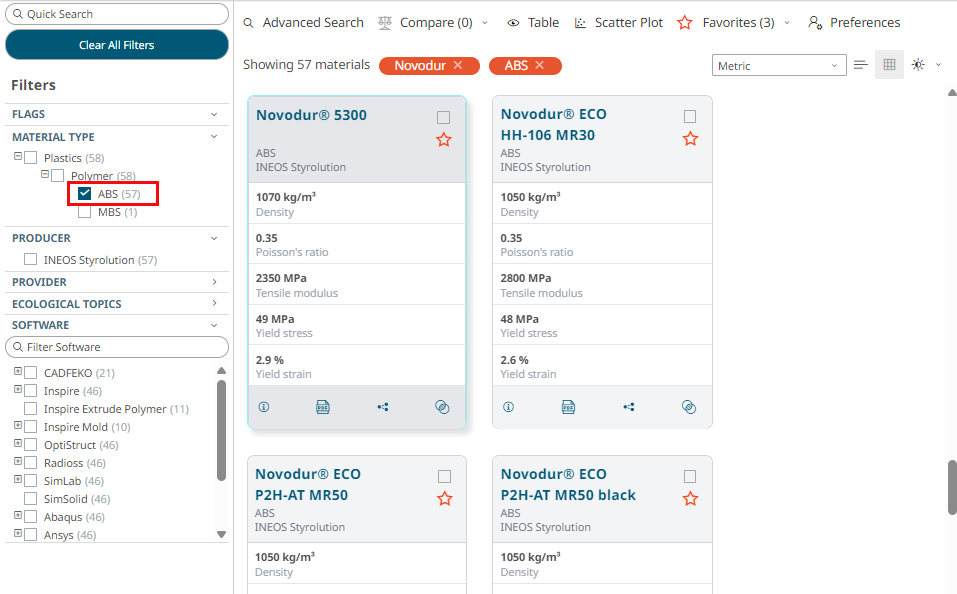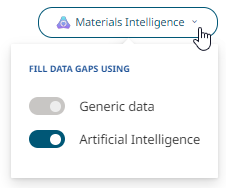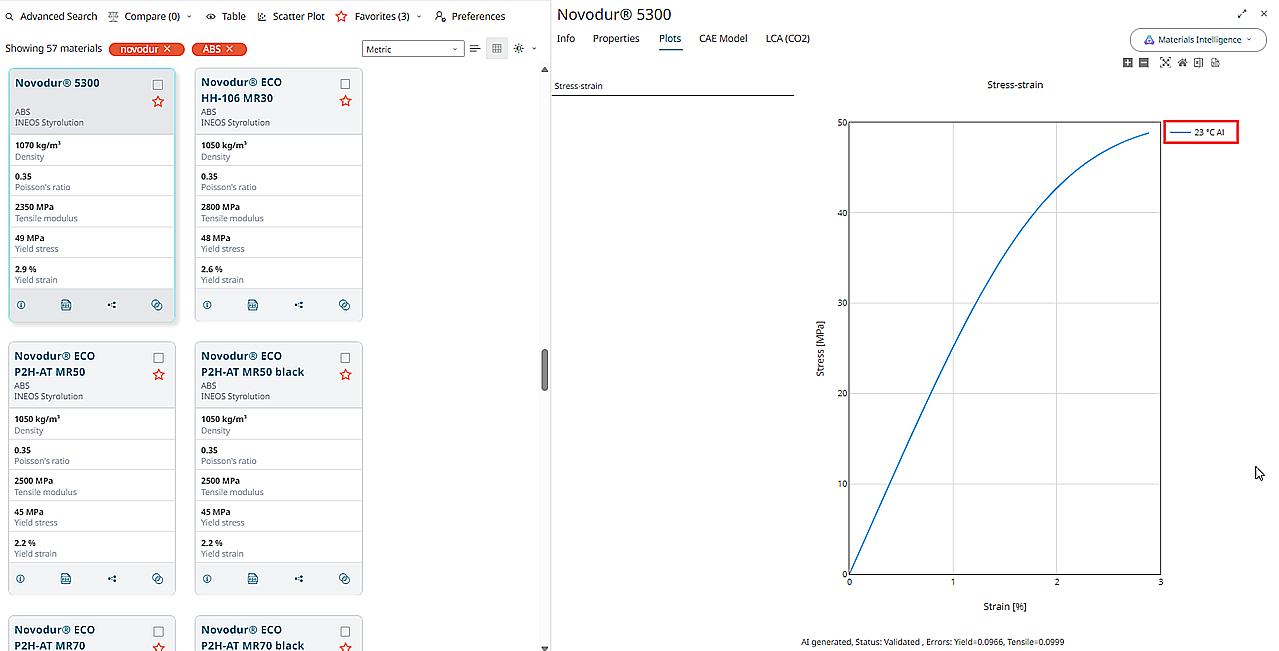Use Artificial Intelligence to Fill Gaps
For materials artificial intelligence can be used to predict missing material data.
- By default, the Artificial Intelligence option is enabled in the Preferences menu.
- Ensure, Artificial Intelligence toggle is on to fill the missing data. You can enable this setting for a selected material individually.
- If neither Generic Data nor Artificial Intelligence is available for a material, the toggle buttons will be grayed out.
- Also, you can choose between Generic Data or Artificial Intelligence based on your need.
- The AI algorithm selects materials for prediction based on material composition and key properties such as tensile modulus, yield stress, yield strain, and stress & strain at break.
- The current AI implementation focuses on predicting stress-strain data for polymers.
- The AI-prediction doesn't support when either yield stress & yield strain or stress at break & strain at break are unavailable.
- The system cross-validates generated data with known material trends to improve reliability for CAE simulations.
To fill missing property values for stress-strain curves and related properties with AI predicted data for a material:
-
Select a material data set.
In the following example, ABS material data set from Polymer is selected.The material database is filtered and displays the results.
Figure 1. Select Material 
-
Click
 Details of a required material.
A window opens to the right displaying the material information.
Details of a required material.
A window opens to the right displaying the material information. -
To select the AI gap filling tool for a material, on the top-right corner,
select .
Figure 2. Materials Intelligence 
The AI tool predicts data and fills the missing curve data for the selected material. The stress-strain data for Plots is displayed.Note: The AI-predicted curve data is labelled as AI.Figure 3. Artificial Intelligence Curve Data 